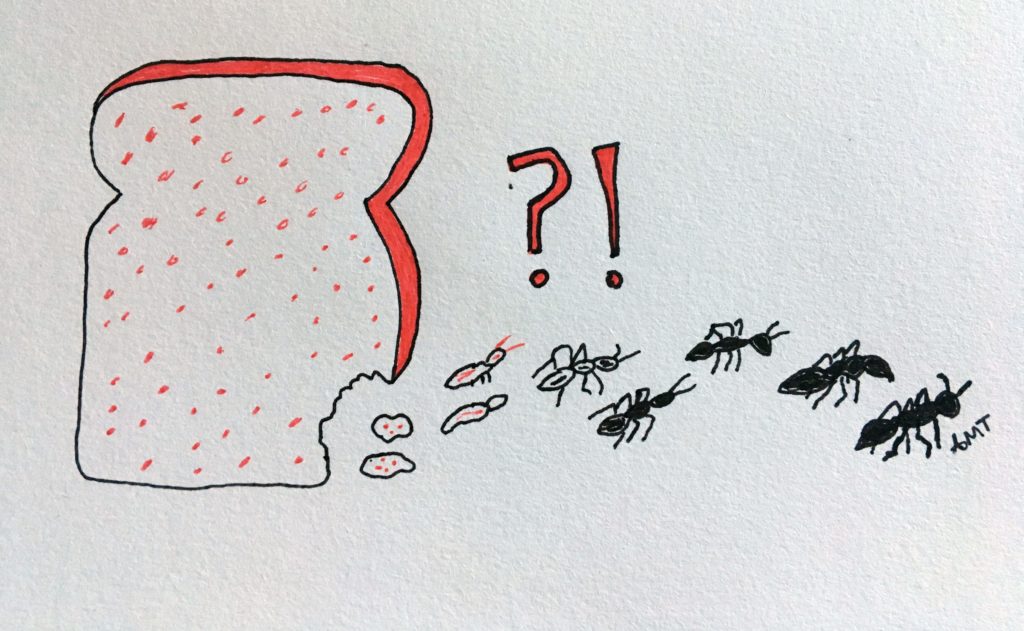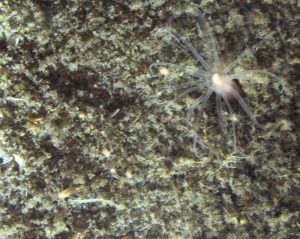Adventures in “Spontaneous Generation”

A childhood friend told me that when she was a little girl, she heard her mother say “don’t drop crumbs, we’ll get ants!” After hearing that, she thought that crumbs turned into ants. My friend and I laughed about this, but later we learned in our grade-school science class that people have shared similar beliefs over the ages. From Aristotle to the ancient Egyptians to Westerners at the start of the 19th century, it was commonly believed that frogs were born from mud, mice grew from smelly old clothes, and rotten meat turned into maggots (ick!). This so-called spontaneous generation of living organisms from non-living substances is also referred to as abiogenesis. Definitive evidence against abiogenesis was finally provided in the 1860’s when Pasteur’s famous swan neck flask experiments showed that microbes did not spontaneously develop within sterilized broth. While this is certainly a landmark scientific discovery, I’ve been surprised to find direct relevance to my own research program.
It started with a “simple” project for an undergraduate student. Much of the research in my lab focuses on aspects of cnidarian biology using the sea anemone Nematostella as a primary study species. In the laboratory, Nematostella is typically cultured in glass dishes, but in the real world, it actually burrows into salt marsh sediments. I’ve become interested in how Nematostella interacts with its natural environment. I had heard from other scientists that Nematostella exhibits a faster rate of asexual reproduction when cultured in more realistic conditions where it can burrow into mud. This sounded interesting! I thought a student could quantify the rate of asexual reproduction under a variety of experimental conditions. I wondered, for example, whether the asexual reproduction helped the animals to achieve an optimal size and shape so that they could more effectively move through the sediments.

We collected some mud from a local salt marsh, and passed it through a mesh filter to remove any large roots, rocks, or even sea anemones already in the sample. We initially put the mud into different sections of a fishing tackle box. We added one sea anemone to each section. After a few days, we saw “new” anemones poking their tentacles out of the mud. It was working! But then I started worrying. Because the different sections of the box were connected to one another, maybe they were somehow climbing from one section to another. We needed a control to prove that wasn’t happening. So we repeated the experiment, this time using some sections as negative controls where no anemone was added. I was shocked to find anemones growing in the control sections! I thought maybe the student had made a mistake, so I repeated the experiment myself…same results!
Then I started arguing with the other members of my lab. I was “sure” that the small anemones were somehow getting washed from one section to the other, perhaps while I was exchanging the water. The other members of my lab were less convinced. Rebecca suggested that very small anemones might already be present in the mud itself and that these small anemones emerged and grew when I started feeding them. Hanny seemed less sure which explanation was right and tactfully suggested that another experiment would be useful. [Sigh] more work often is the right answer, and scientific rigor is hard to argue with.
With a bit more struggle, I’ve progressed to a more complicated experimental design that includes entirely separated chambers, multiple temperature treatments, and feeding manipulations. At risk of “scooping” my own research project, I’ll share the punchline. The mud is alive! Tiny anemones are very abundant in these sediments. They passed through our filters, weren’t visible with casual observation, and can stay hidden for extended periods of time. But with the right conditions, they rapidly emerge and grow. It’s not really spontaneous generation, but it kind of looks like it. Now we are studying these dynamics to better understand how Nematostella survives in the salt marsh over the course of the year and how it begins to grow and thrive as the water warms and food becomes more abundant. And I’ve been reminded again about the importance of appropriate experimental controls and questioning my own assumptions.